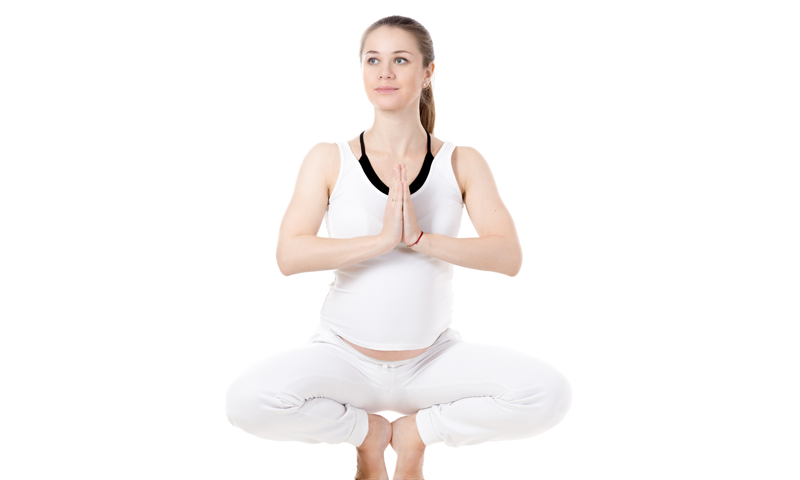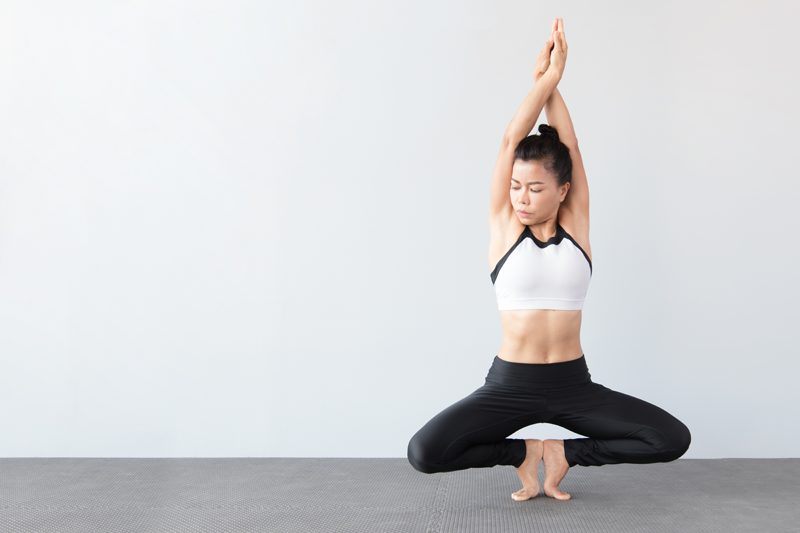
What is Dhyana Yoga?
28th May 2019
The 5 Tibetan Rites and Their Benefits
7th June 2019What is Mula Bandha?

The Bandhas are best described as the body locks used in yoga. Essentially, they are parts of the body that are isolated to unlock benefits. To unlock the unique benefits of the Bandhas, you’ll need to use targeted use of breath. In yoga, there are three main Bandhas: Uddiyana Bandha, Jalandhara Bandha, and Mula Bandha. Uddiyana compresses the stomach, Jalandhara constricts the throat, and Mula contracts the pelvic floor. In this article, we’re going to focus on Mula Bandha. If you’re interested in learning more about Mula Bandha, put on your yoga bra and keep reading.
What is Mula Bandha?
Mula Bandha is the root lock. While the exercise is often overlooked in the studio, it’s an important part of yoga practice. When translated from Sanskrit, the word Mula means the root of a plant or tree. In English, root can also mean the base or foot of an object, or the origin of a thing. In yoga, Mula refers to the base the torso and is associated with Muladhara chakra, the lowest of the spine’s energy centres.
How to Practice
Isolating the contractions in the pelvic floor can be tricky. With this in mind, learning how to use Mula Bandha will require daily practice. To use the Bandha effectively, you’ll need to strengthen the muscles gradually. The process should not be rushed, as building strength slowly will allow mental discrimination to develop at the same rate. A common obstacle in Mula is that the muscles of the perineum tend to work together; because of this, it can be difficult to contract one without the others. Additionally, many yogis accidentally engage the respiratory muscles along with the perineal muscles. When this happens, unnecessary tension may occur in other areas of the body. To avoid this, take extra care and attention when learning the practice.
Step 1
The first step is to learn how to contract and relax the perineal muscles. To begin, sit in a meditative seated pose with your legs crossed. Close your eyes and relax your body. Slow your breathing and feel the sides of your rib cage expand and contract while releasing tension from the upper body.
Keeping your breath steady, tense the entire perineal region. Keep your breathing as smooth as possible, without pausing as you engage the muscles. When the entire region is engaged, release it slowly. In this exercise, you’re not trying to engage individual areas but to strengthen all the perineal muscles while increasing your awareness of them. For best results, repeat this exercise around 25 times.
Step 2
For step two, contract all the muscles of your perineum and hold for as long as possible. While the area is engaged, continue to breathe slowly and steadily. Feel the area around the anus, then move to the central contraction of the cervix or perineal body, and finally sense the contraction in the urogenital region. As you focus on each area, try to tighten it and feel the sensation. When you’ve felt the three different areas, release the contraction and relax the region.
Step 3
The next step is to coordinate the contractions of the perineum with your breath. As you inhale, contract the perineum. As you exhale, gently release the contraction. If possible, time the contractions so they coincide with your breath. Loss of control or jerkiness is completely normal amongst beginners. With regular practice, this can be reduced over time. During this exercise, focus on the central region of the perineum, paying attention to the sensations associated with the contraction. Repeat this exercise 25 times for best results.

Step 4
When you’re ready, contract the muscles in the centre of the perineum without involving the anal and urogenital areas. This is the basic version of Mula Bandha, and it will take some time to practice it correctly. If you can’t do it to start with, don’t panic! It’s better to develop the practice slowly than to rush it.
Step 5
Once you can hold the contraction without affecting your breath, your other sympathetic muscle tensions will relax. When this happens, you’ll be able to hold Mula Bandha comfortable for a longer duration. When you achieve this, you can use Mula Bandha during meditation and pranayama exercises.
The Benefits of Mula
Mula Bandha temporarily restricts energy to the perineum. Doing this has a number of benefits including an overall sense of balance and calm. Additionally, it gently enhances concentration and allows our voice of consciousness to speak more clearly. A favourite benefit amongst yogis is the reversal of the downward-moving energies of the root chakra and the upward-moving energies of the heart chakra. In addition to being reversed, the energies are united. This union is thought to increase your awareness and improve concentration.
Mula also has a variety of physical benefits. The lock is thought to lower respiration and heart rate, reduce blood pressure, calm sympathetic arousal, improve digestion, and harmonise urogenital functioning. In women, it can also help to regulate unstable menstrual periods. While these effects are noted by yogis, there is currently little scientific research to investigate them. With this in mind, Mula is a personal practice of trial and error.
In Summary
Using Mula Bandha effectively can take time, practice, and dedication. However, the results certainly won’t disappoint. At the least, regular practice of Mula Bandha will help you to become aware of the place where muscle contractions converge. This contraction takes place in the Muladhara chakra, the root from which energy is said to flow through the body. When this energy is balanced, you can enjoy a sense of relaxation in everyday life. For best results, put on your yoga pants and practice Mula Bandha each morning. Work through the above steps gradually until you can practice unaided.

